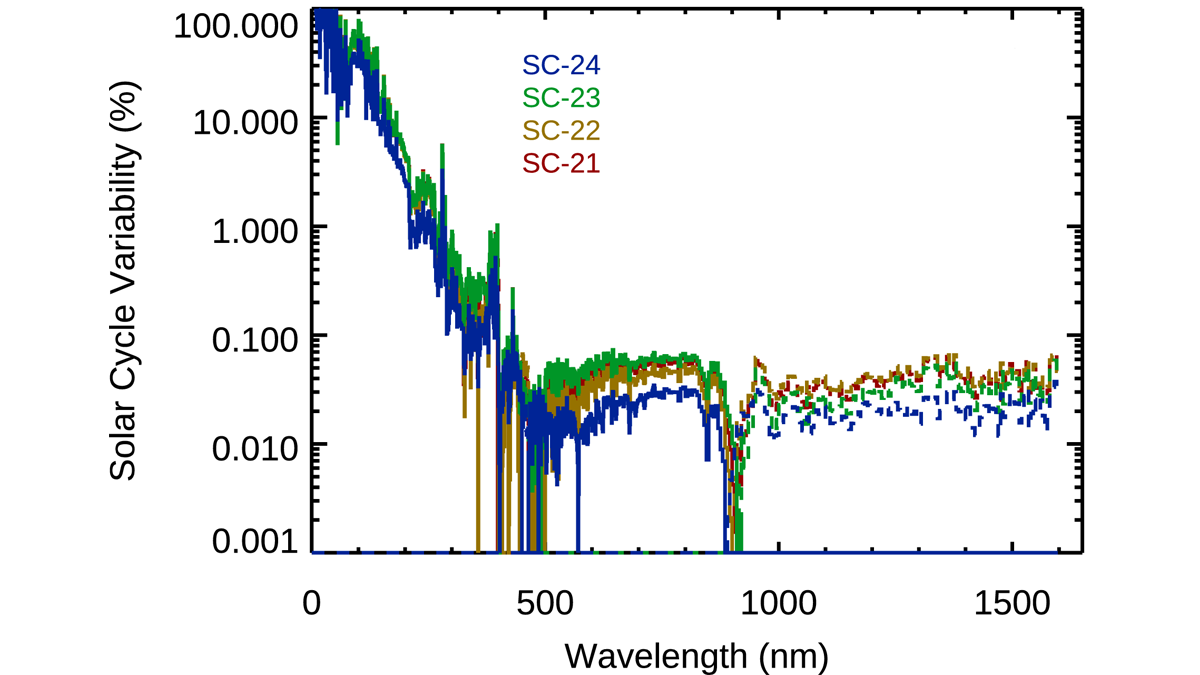Editors’ Highlights are summaries of recent papers by AGU’s journal editors.
Source: Earth and Space Science
Observing the solar spectral irradiance (SSI) is important to understand where solar energy is deposited in Earth’s system and how it affects the cryosphere, atmosphere, and ocean.
Woods and DeLand [2021] have captured a new, improved solar spectral irradiance record SSI3 that covers 1978 to 2020 and has an extended spectral range from 0.5 to 1,600 nm compared to its predecessor SSI2. For SSI3, solar variability proxy models are developed to fill in gaps in the data record in the extreme ultraviolet (EUV) and visible and near-infrared (VIS-NIR) spectral range. Due to including the latest, most accurate solar spectral irradiance measurements as well as instrument degradation trends the most accurate solar cycle variability estimates can be provided by SSI3. Interestingly, the SSI3 composite has a negative solar cycle variability for wavelength longer than 900nm while other models show a negative solar cycle variability from 1,300nm and beyond.
While there are plans to extend the SSI observations for the NUV-VIS-NIR spectral range which will help to resolve the spectral location of transition to negative solar cycle variability, there are major concerns about the future SSI observations in the EUV-FUV range.
Citation: Woods, T. N., & DeLand, M. T. [2021]. An improved solar spectral irradiance composite record. Earth and Space Science, 8, e2021EA001740. https://doi.org/10.1029/2021EA001740
—Astrid Maute, Editor, Earth and Space Science

